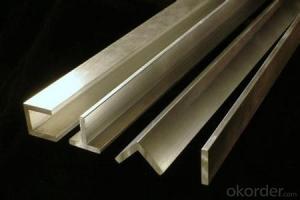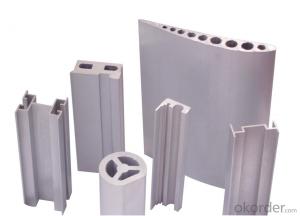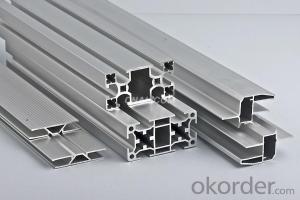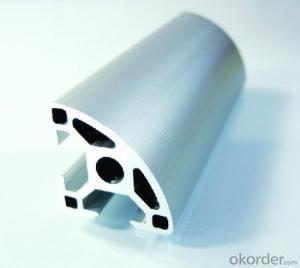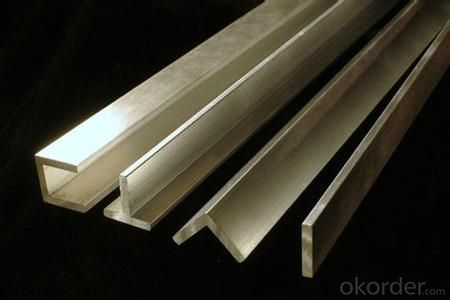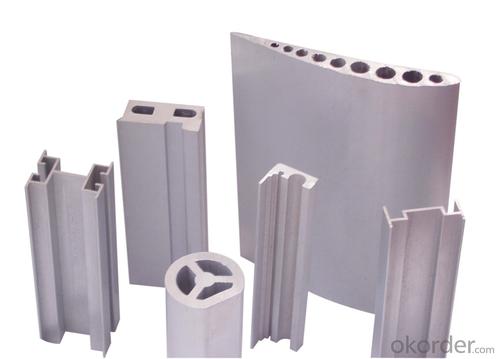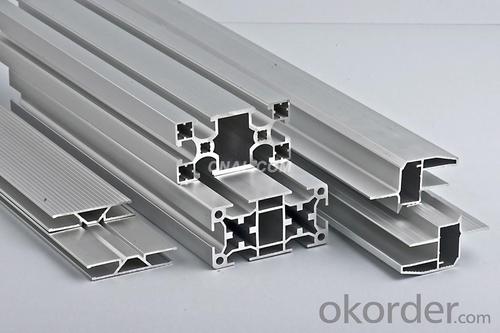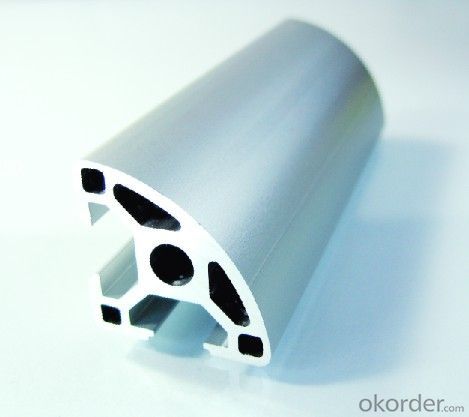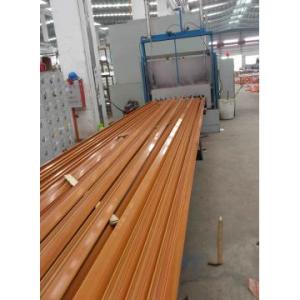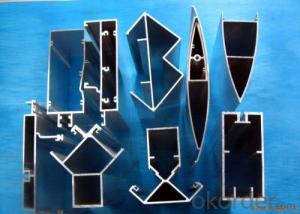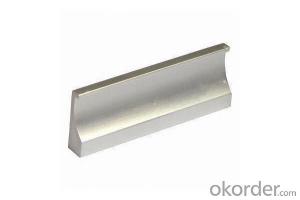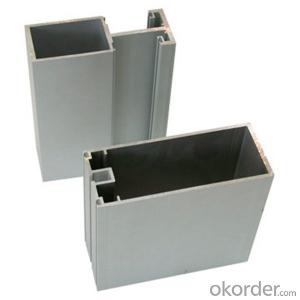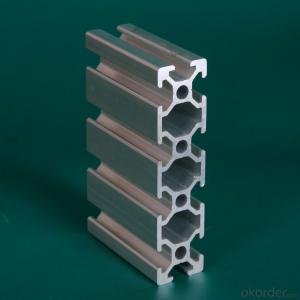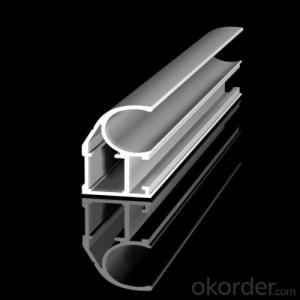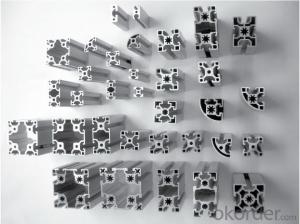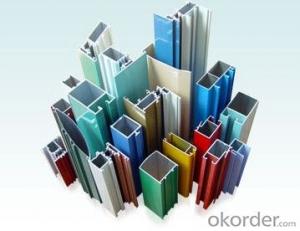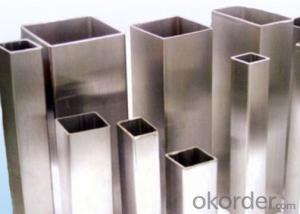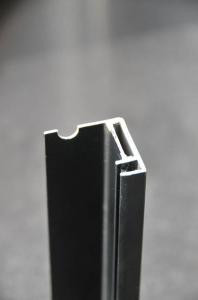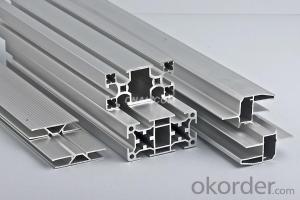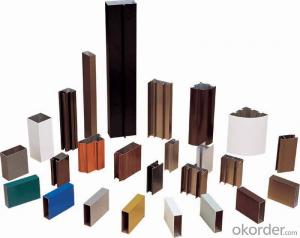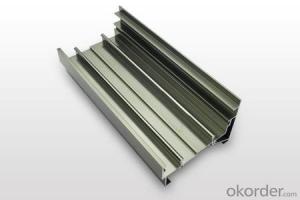Japanese Architectural Aluminum Extrusion Profiles
OKorder Service Pledge
OKorder Financial Service
You Might Also Like
Aluminium is a relatively soft, durable, lightweight, ductileand malleablemetalwith appearance ranging from silvery to dull gray, depending on the surfaceroughness. It is nonmagnetic and does not easily ignite. A fresh film ofaluminium serves as a good reflector (approximately 92%) of visible lightand an excellent reflector (as much as 98%) of medium and far infraredradiation. The yield strength of pure aluminium is 7–11 MPa,while aluminium alloys have yield strengths ranging from200 MPa to 600 MPa. Aluminium has about one-third the densityand stiffness of steel. It is easily machined,cast, drawn and extruded.
Features:
Material | Alloy 6063,6061,6005or according to customer’s choice |
Temper | T3, T4, T5, T6 |
Surface | Anodize, electrophoresis, powder coating, PVDF coating, wood grain painting, matted, etc. |
Length | Coating 6.5 meters, Anodizing 6.5 meters, Mill finish 5 meters |
Application | Industrial, electrical equipment(TV set, air conditioner, refrigerator, computer), decoration,construction, transportation |
Custom Made | We can package following with customer's request. |
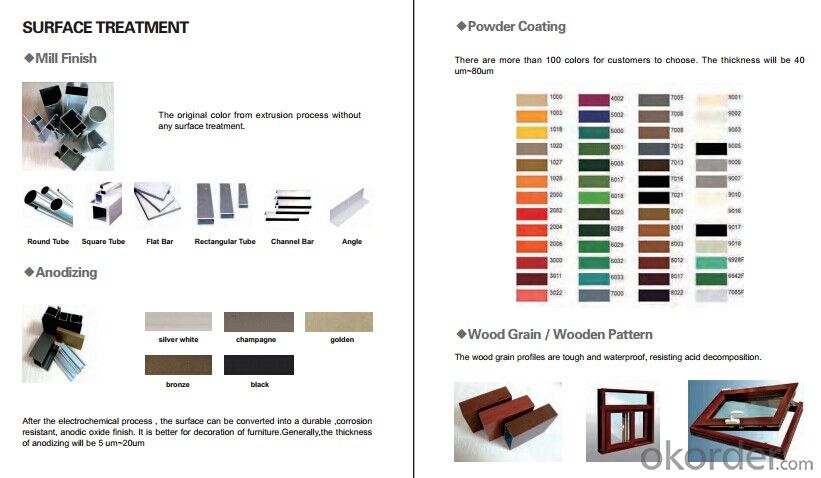
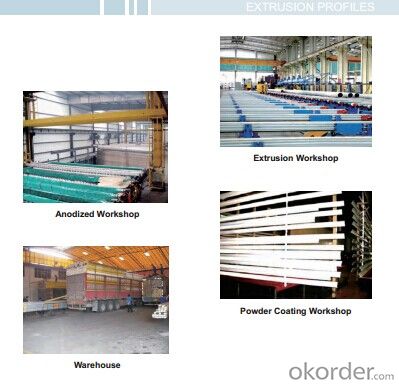
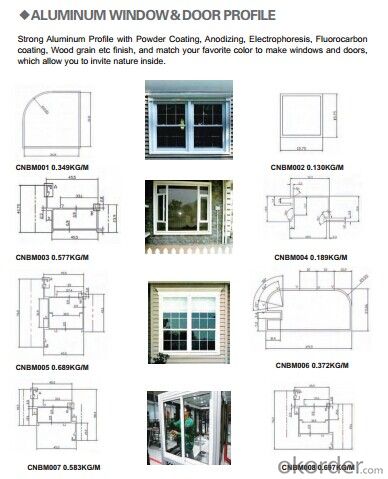
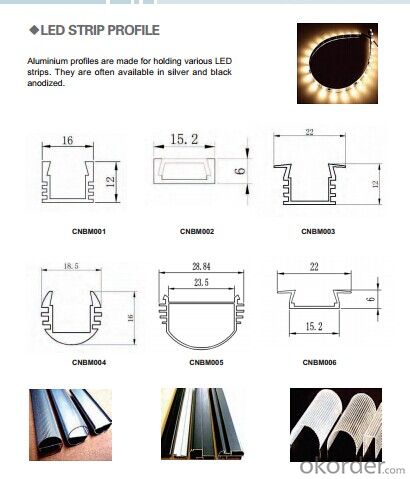
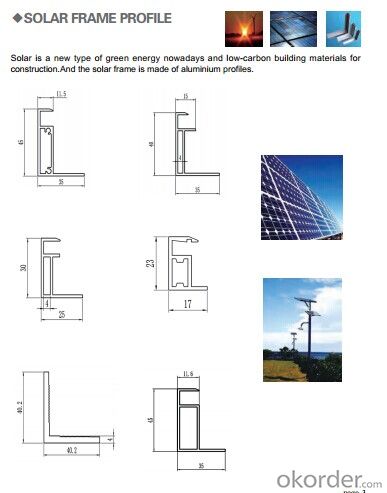
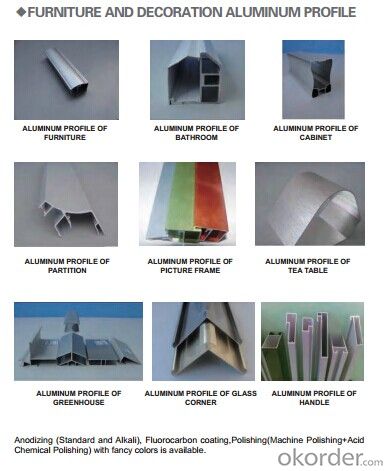
- Q: This question asks for an overview of the various dimensions and forms of aluminum profiles that are specifically used in the construction of windows and doors.
- <p>Aluminum profiles for windows and doors come in a variety of sizes and shapes to accommodate different architectural designs and functional requirements. Common profiles include rectangular tubes for frame construction, square or rectangular profiles for sashes, and L-shaped profiles for corners. Sizes can range from thin, lightweight profiles suitable for residential use to heavy-duty, large-scale profiles for commercial applications. Shapes can be customized to fit specific window styles such as casement, sliding, or fixed, with dimensions varying from a few millimeters to several centimeters in width and thickness. The profiles are designed to provide structural integrity, weather resistance, and aesthetic appeal, with the ability to be combined in various configurations to create the desired window or door system.</p>
- Q: Do aluminum profiles have good thermal insulation properties?
- No, aluminum profiles do not have good thermal insulation properties.
- Q: How do aluminum profiles compare to other materials like steel or wood?
- Aluminum profiles offer several advantages over materials like steel or wood. Firstly, aluminum is lightweight, making it easier to handle and transport. Secondly, aluminum is resistant to corrosion, unlike steel, which can rust over time. Additionally, aluminum profiles have a high strength-to-weight ratio, making them durable and ideal for various applications. Lastly, aluminum is highly recyclable, making it a more sustainable choice compared to wood or steel.
- Q: Does aluminum alloy profile conduct electricity?
- Aluminum conducts well, and aluminium alloys must also be electrically conductive. But aluminum alloys contain impurities such as silicon and magnesium
- Q: What specific criteria or standards must be met when employing aluminum profiles in commercial construction?
- <p>Yes, there are special requirements for using aluminum profiles in commercial buildings. These include adherence to building codes and regulations, which vary by region. Profiles must meet specific strength and durability standards to ensure structural integrity. They should also comply with fire safety and energy efficiency requirements. Additionally, the profiles need to be resistant to corrosion and weathering, and must be compatible with other building materials. Aesthetic considerations, such as color and finish, are also important to match the building's design. It's crucial to work with certified suppliers and follow proper installation procedures to meet these requirements.</p>
- Q: Light aluminum is what mean?
- Extruded out only through aging treatment, without other surface treatment of aluminum (such as spraying, oxidation and other deep-processing)
- Q: Are there any fire safety considerations when using aluminum profiles?
- Yes, there are fire safety considerations when using aluminum profiles. Although aluminum itself is not combustible, it can still contribute to the spread and intensity of a fire. Aluminum profiles, especially when used in construction or industrial applications, can act as fuel for a fire and potentially increase its severity. One important consideration is the fire rating of the aluminum profiles. Fire ratings indicate the length of time a material can withstand exposure to fire before it fails. It is crucial to select aluminum profiles with appropriate fire ratings that align with the specific requirements of the application. This ensures that the profiles can delay the spread of fire, providing valuable time for evacuation and firefighting efforts. Another consideration is the use of appropriate insulation materials. Aluminum profiles are often used in building facades, curtain walls, and other structural applications. In such cases, it is important to ensure that the insulation materials used with the aluminum profiles are fire-resistant. This helps prevent the fire from spreading through the building envelope and reduces the risk of structural failure. Additionally, fire safety measures should be implemented during the installation process. Proper firestopping techniques should be employed to seal any gaps or penetrations around the aluminum profiles. This helps prevent the passage of flames, smoke, and hot gases from one compartment to another, limiting the fire's spread. Regular maintenance and inspection of the aluminum profiles are also essential for fire safety. Any damage or deterioration should be promptly addressed to prevent potential fire hazards. Additionally, proper fire detection and suppression systems should be in place to detect and control fires in a timely manner. Overall, while aluminum profiles themselves may not be combustible, it is important to consider various fire safety measures when using them in construction or industrial applications. By selecting appropriate fire-rated profiles, using fire-resistant insulation materials, implementing proper installation techniques, and maintaining regular inspections, the risk of fire can be minimized, ensuring the safety of occupants and property.
- Q: Many aluminum extrusions are edge banding materials. What special advantages do they have for opening materials?.
- Sealing material does not open well. Most of the sealing material is old style, new openings are more, with the sealing material to the landlord to see, it will feel that the amount of material enough, you can raise the landlord's price.
- Q: This question asks for various methods to enhance the heat transfer efficiency of aluminum profiles.
- <p>Improving the thermal performance of aluminum profiles can be achieved through several methods: 1. Material Selection: Choose aluminum alloys with higher thermal conductivity for better heat transfer. 2. Design Optimization: Design profiles with larger surface areas to increase heat dissipation. 3. Fins and Ribs: Incorporate fins or ribs to increase the surface area and enhance heat dissipation. 4. Coating: Apply thermally conductive coatings to improve heat transfer. 5. Insulation: Use thermal insulation to reduce heat loss. 6. Heat Sinks: Integrate heat sinks to dissipate heat more effectively. 7. Composite Materials: Combine aluminum with other materials to improve thermal properties. 8. Manufacturing Techniques: Employ advanced manufacturing techniques to create more efficient profiles. Each method can be tailored to specific applications to achieve optimal thermal performance.</p>
- Q: Why should aluminum surface treatment process?
- He devotes himself to aluminum passivation, electroplating and surface treatment, and has problems to visit at any time.
Send your message to us
Japanese Architectural Aluminum Extrusion Profiles
OKorder Service Pledge
OKorder Financial Service
Similar products
Hot products
Hot Searches
Related keywords
